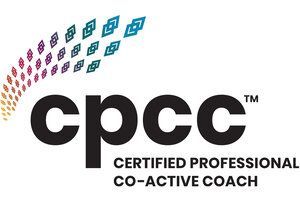10 Tips for Dealing with Difficult Family Relationships During the Holidays

While Christmas is often termed “The Most Wonderful Time of the Year”, it can be a season of distress for many. Navigating less than ideal relationships with immediate, extended or in-law family often comes up in therapy sessions around this time of the year as the prospect of having to spend protracted periods of time with challenging people in your world can bring up old wounds. Most of my clients find themselves in a tension between feeling a desire to have family time together on the one hand, and a sense of heightened anxiety at the thought of the potential negative outcomes on the other.
If you opt for sharing the holidays together, then taking some time out before you meet to reflect on your emotions, the typical nature of your interactions, the situations that may be potentially difficult are all helpful towards your equipping. Here are some suggestions of steps that you can take towards your mental preparation:
1. Know what you're getting into - Making sense of the typical patterns of relating, the roles that we habitually fall into, what/who triggers you and the circumstances around that can improve your self and relational knowledge and understanding and help you to be less reactive in the moment. It also initiates the process of thinking about how to shift the usual dynamics and opens you up to the possibilities of new ways of relating. Think about your interactions with others like dancing together – if you want to change the dance you have to do some different steps.
2. Work towards acceptance - This is the first step for change. Your family is who they are. If they have disappointed you in the past, are not able to meet your needs or do not share the same ideas as you, trying to change them will leave you frustrated, resentful and disappointed. Their responses, or lack thereof, is not a reflection you and your worth but is an expression of their humanity and limitations. Sometimes our painful relational experiences keep us stuck in perceptions and a story that repeats itself and prevents us from seeing that there is also good in our family members. Acceptance means not only coming to terms with the negatives in these relationships but also seeing the positive attributes that can be enjoyed as well, creating a broader and different story.
3. Shift your expectations – Unmet expectations can trigger past hurt and pain and potentially create further conflict. Acceptance allows you to alter your expectations of your family to a more realistic outlook of how they will respond, what they can and cannot be or do for you and what the nature of your time together will be potentially be like.
4. Have a plan – Reflecting on past patterns of interactions and how you predict potentially challenging certain situations might go can lead to worry and a sense of helplessness. When worrying thoughts surface, use your energy to devise a plan of how you will handle these situations instead. Focus on what you can control rather than what you can’t – Will you choose to communicate differently? Can you steer the situation to a different outcome? Will you let things go rather than engaging? Is it better for you remove yourself from the situation? Asking these kinds of questions before hand and planning how you will respond helps you to feel some sense of control, decreases your level of anxiety and builds confidence.
5. Set clear boundaries for your time together - Being with your family does not imply that you are obligated to spend all of your time together or that you have to share the same living space with them. Think about whether it will serve you better to have separate accommodation. Choose what activities you want to share with everyone and do not be afraid to say no plans that you are not keen on. Make time to also include the traditions and experiences of personal importance to you that you might want to enjoy on your own or with selected people.
6. Establish communication limits - Have clear sense in advance of what are acceptable topics for you to engage in and what is off limits. This will help you to keep conversations from escalating. Remember that if potentially conflictual topics do arise, you can protect your truth without having to defend it, prove it, or convince anyone else of your reality. If you do decide to engage, try to stick to factual contributions of your experience, steer the conversation in an alternative direction, or try redirecting to a positive aspect of the time together and the original purpose of gathering as a family.
7. Gather support - If you have a partner, communicate some of your emotional insights, plan of action and boundaries so that you are on the same page and feel supported. Consider who are the other family members that you have more positive interactions with that could be a safe and trusting space for you to move towards.
8. Make time for self care - Before and during the time with your family. This will help to ground you and keep you relaxed. Besides a boundary on your time, think of how you might also need to protect other aspects of your wellbeing - intellectual, emotional and physical, what limits you would need to set in order to preserve your mental health and peace of mind?
9. Keep a check on your emotions - If you sense emotions building take a pause and get some alone time. What are the strategies that help you to pay attention to your emotions and soothe your body? Having a prior sense of what coping strategies you could employ helps you to deal more effectively with emotionally charged situations. Practicing self compassion allows you to validate your emotions and think about what you can do to meet your current needs. Other strategies such as journalling, sharing your thoughts and feelings with a trusted someone, mind body techniques such as breathing and relaxation exercises, time in nature and physical exercise can all be useful to alleviate your stress and help you to reset.
10. Keep a clear head - Be mindful of your alcohol intake. Whilst alcohol can be an enticing coping mechanism it can be counter productive. Managing your stress levels, regulating emotions, effective communication and decision making are actually all compromised when one is intoxicated. Instead keep in mind your other self care tools discussed above and use these when you feel stress levels rising and you need to self soothe.
If you find some of the above steps challenging to work though on your own, enlisting the help of a therapist who has expertise in family dynamics can be useful to understand relational patterns, your emotions as well as facilitating effective coping plans.
If you are interested in family counselling, please contact us via email, phone or WhatsApp to arrange a consultation with one of our supportive professional therapists.
About the Author: Claudette is a psychologist and an individual, relationship and family therapist. A firm believer in the transformative power of psychotherapy and coaching, Claudette is passionate about facilitating a safe and empowering process whereby individuals can face their challenges and find strategies that lead to a greater sense of wholeness. Read Full Bio >










